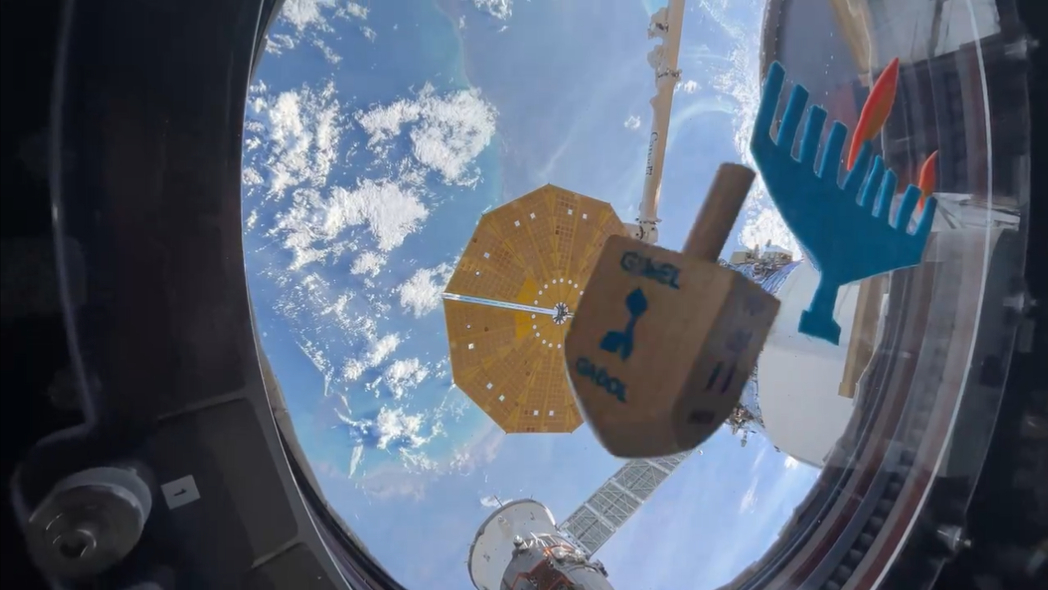
The first night of Hanukkah was celebrated by Jews across the world on Thursday evening (Dec. 7) — and by one who is not currently on this world.
NASA astronaut Jasmin Moghbeli is a member of the International Space Station's (ISS) current Expedition 70 mission aboard the orbital lab. To celebrate the Jewish festival of lights, Moghbeli brought a felt menorah made by her and her family.
Hanukkah commemorates the rededication of the Second Temple in Jerusalem, after the Maccabean Revolt to vanquish the Greeks during the 160s BCE. The apocryphal tale from that victory says there was enough oil left to light the Temple's ceremonial lamp for only one day. But the oil miraculously lasted for eight days, hence the holiday's eight-night duration.
Related: NASA astronaut will celebrate Hanukkah in space with felt menorah

A Menorah, or hanukkiah, is a nine-branched candelabra, with one seat raised above and used to light the others. During Hanukkah, it is traditional for Jews to light an additional candle for each of the holiday's eight nights. However, open flames are prohibited aboard the ISS, and most crewed spacecraft. So, rather than lighting candles each night, Moghbeli will be adding an additional piece of "fire" to her felt display.
Along with her NASA-compliant hanukkiah, Moghbeli also has a dreidel with her aboard the ISS. The four-sided top is used to play a Hanukkah game in which participants chance their spins with chocolate coins called "gelt," letting the dreidel's fall decide who gets the pot. The top's four sides feature letters, which, in Hebrew, make an acronym for the phrase that translates to "a great miracle happened there."
Happy Hanukkah from the @Space_Station!! Real candles not allowed! pic.twitter.com/xdqwyot5aeDecember 7, 2023
Sharing a video to social media, Moghbeli wished viewers "happy Hanukkah, from the International Space Station," and then spun a dreidel in view of the felt menorah and one of the station's windows looking downward at Earth.
As with all things in microgravity, the spin of the dreidel would continue until acted upon by a greater force. And, toward the end of her video, Moghbeli's dreidel does, in fact, bump against the camera lens and bounce off the space station's window, but that doesn't completely stop its spin.
What's more, without a clearly defined directional orientation, a true game of dreidel may not even be possible in microgravity, as the top could never definitively land on any of its four sides. For now, that can be a problem for the rabbis to debate, and we can just enjoy the marvel of a (theoretically) endlessly spinning dreidel in space.







